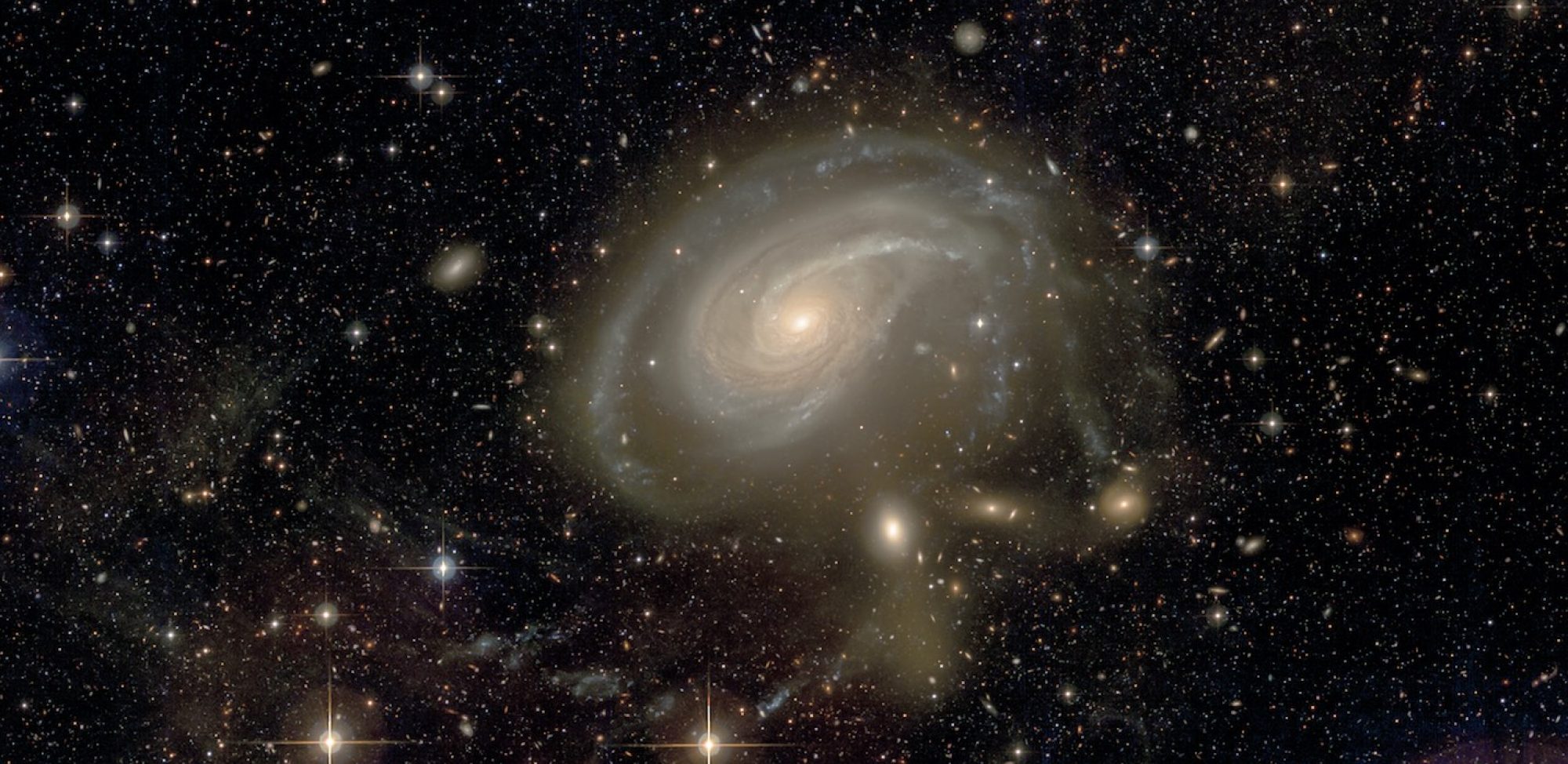
Context. The lenticular galaxy NGC 474 hosts a rich system of tidal shells and streams, some of which are exceptionally bright. Two teams recently presented spectroscopic observations of the brightest shells. These were the first shell spectra ever published. They studied the stellar populations of the shell, of the center of the galaxy and of its globular clusters.
Aims. The precise formation scenario for the tidal features of this prominent galaxy however still remained unclear. Here, we add further clues on their formation from the radii of the shells, and we present a scenario for the formation of the tidal features that seems to be unique and explaining all available data.
Methods. Shell radii are analyzed with the shell identification method, and we run self-consistent simulations of the formation of the tidal features.
Results. Observations suggest that the tidal features originate from the accretion of a spiral galaxy. The shell identification method allows the shell-forming merger to have happened 0.9-2 Gyr ago. The observed shell radii are best explained if the merging galaxies collided first 1.3 Gyr ago and then again 0.9 Gyr ago, thereby forming the shells in two generations. This would also explain the young ages of stellar populations in the center of the galaxy and the young age of the globular clusters. The analytic models of shell propagation, that underlie the shell identification method, are verified by a simulation. We managed to run simulations that reproduce well the morphology of the tidal features both with Newtonian and MOND gravity. The accreted spiral likely reached NGC 474 nearly radially, in the plane of the sky, from the south, its rotation axis pointing toward us. It should have had a stellar mass of around 1/6 ofNGC 474, i.e. 109.8M. It seems that all tidal features in the galaxy originate from one merger
Bilek et al., 2022, A&A 660, 28

